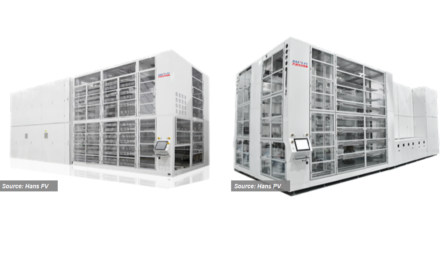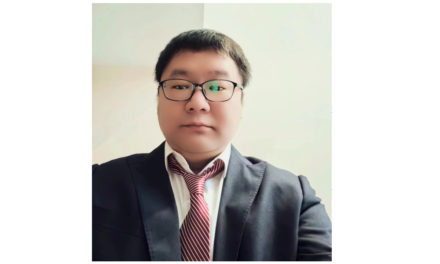TOPCon took off with LPCVD – all the early adaptors of this advanced architecture built their first mass production lines based on LPCVD technology. Laplace is a strong believer and leading supplier of LPCVD in China. The Chinese equipment makers has been optimizing the technology to overcome the short comings of LPCVD. TaiyangNews spoke to Zhang Yao, marketing center director at Laplace.
TaiyangNews: Laplace is quite young in the business of PV equipment supply, but has been able to establish itself as one of the leading equipment vendors in the industry. Just brief us about the company’s background and your journey with key milestones.
Zhang Yao: Laplace was incorporated in 2016. The company’s founders have a strong background in cell production equipment and technology. At the time, the key production equipment was primarily imported into China. Our founders realized that there was a gap to fill and that is where the idea of Laplace was born. I think we pretty much did our job on this front. As for the technology, the primary focus for Laplace since its inception has been TOPCon with larger and thinner wafers. Back then, we believed that n-type is the future and TOPCon would be the technology of choice in the future. As you can see now, our conviction has been proven right. However, our first product was a boron diffusion furnace and the second one was LPCVD. We shipped our first LPCVD pilot tool in 2017 and installed our first GW-scale TOPCon line in 2020. Meanwhile, we have also provided pilot tools to several leading cell makers.
TaiyangNews: Can you talk about the range of equipment solutions you have on offer for PV?
Zhang Yao: We have 2 core product lines – thermal processing and deposition. Within the thermal tools segment, we offer diffusion furnaces and annealing tools. Our PECVD and LPCVD tools are in the deposition tools category. We also offer integrated characterization tools for electroluminescence and photoluminescence. While Laplace started with TOPCon, at this stage, we now can also support other advanced cell technologies such as nand p-type IBC.
TaiyangNews: What is your total installed base for these production tools put together?
Zhang Yao: The total shipments including both deposition and thermal processing tools total 110 GW as of now and our pace of growth is high.
TaiyangNews: Why TOPCon? Why not other advanced technologies – HJT for example?
Zhang Yao: As I mentioned at the beginning, Laplace has been a strong believer in n-type cell architectures, because they are free from degradations such as LID and PID. When it comes to TOPCon, the technology has a high theoretical efficiency potential of 28.7%.
TaiyangNews: What is the installed capacity for TOPCon as a technology right now and where do you see it going?
Zhang Yao: The total installed capacity for TOPCon as of now is 100 GW and according to our internal estimate, it will reach 400 GW by the end of 2023.
TaiyangNews: Specific to TOPCon solutions, what do you have on offer from the house of Laplace?
Zhang Yao: We provide the entire thermal process equipment, including LPCVD, boron expansion, annealing and PECVD. We also provide complete line automation and analysis inspection equipment.
TaiyangNews: From what I gather, an offering for front surface passivation is conspicuous by its absence. Do you have an offering towards this requirement, or if not, what are your plans?
Zhang Yao: As of now, no; Till then, the customer will have to depend on third parties for their ALD tool needs.
TaiyangNews: Now I also see that you are expanding into other tools, which leads to the possibility of offering turnkey solutions. Where do turnkey solutions figure in your scheme of things?
Zhang Yao: We are already offering turnkey solutions in cooperation with other equipment makers. Turnkey solutions are mainly targeted for overseas markets, especially India.
TaiyangNews: Can you name a few companies you are cooperating with?
Zhang Yao: There are several options, RENA for wetchemical, for example, and we are working with Maxwell for the backend line .
TaiyangNews: What makes your tools different from others?
Zhang Yao: Most of our competitors have shifted their focus from LPCVD to PECVD, while we have maintained ours. Our LPCVD tools have higher throughput and process stability compared to others. Also, unlike the classical LPCVD design that involves placing the wafers vertically, our tools are designed for the horizontal wafer process.
TaiyangNews: Now that you mention horizontal wafer processing, Semco was the first to use this approach. How closely does your equipment resemble that of Semco’s? Or asked differently, what differentiates your equipment from theirs?
Zhang Yao: You are right that we also follow Semco’s route of horizontal wafer orientation. But the similarities end there. Our wafer carrier design is completely different, so are the key elements of our reactor structure. The design of our heating system is one such good example. For LPCVD, Semco uses stainless steel reaction chamber, we use quartz. I cannot go into the nitty-gritties, but I want to assure you that our tools are built with in-house knowhow.
TaiyangNews: You mentioned that you are using quartz with LPCVD. How are you handling the low life of the quartz ware?
Zhang Yao: Yes, it is one of the key challenges with the LPCVD-based polysilicon process. The mismatch in the expansion coefficient of quartz and polysilicon deposited on the inner side of the quartz tube leads to cracks in the tube. That’s why the quartz tube had to be changed every 2 months in early times. With extensive optimization of the process, we are now able to increase the life of the quartz tube to 5 to 6 months. When it comes to quartz boats, they need to be cleaned periodically to increase their durability. The current lifetime of the quartz boat is about 8 to 10 months. Alternatively, silicon carbide carriers can replace quartz boats.
TaiyangNews: You mentioned that you have maintained your focus on LPCVD. As you know, there is quite a buzz about PECVD with several companies announcing expansions based on PECVD. Why is Laplace sticking to LPCVD?
Zhang Yao: Laplace had developed a PECVD solution for polysilicon deposition far back in 2018, but we are not fully convinced with the technology. LPCVD’s advantage is undeniable that it can result in the formation of better tunneling oxide in principle. Because it is thermally grown, and it is also very homogeneous. The problem with LPCVD is not at the principle level but at the engineering level. PECVD’s issue, on the other hand, is at the principle level. With PECVD, the layer uniformity is not good and the exhaust gas treatment is also complex.
TaiyangNews: Just for the sake of argument, why is the industry taking the PECVD route if LPCVD is so good?
Zhang Yao: It is true that now a few companies are also opting for PECVD for TOPCon. This was mainly driven by Tongwei and Trina deciding to go with PECVD in 2022. Many companies simply followed them. However, in 2023, several of these companies are switching to LPCVD.
TaiyangNews: Any guess why?
Zhang Yao: Some early adopters of PECVD have not reached their planned performance targets, and they have been working on this for the last 6 months. If this is not solved very soon, my guess is the market will shift back to LPCVD.
TaiyangNews: Your LPCVD tools are based on horizontal wafer processing; is it single wafer per slot or front-to-front loading?
Zhang Yao: The current state of the art for LPCVD processing is single wafer per slot and our tools are also currently based on this philosophy. However, we have also developed a solution for 2 wafers per slot in frontto- front loading. This will become mainstream in the near future. The 2 wafers per single slot solution from Laplace will be ready before Q4 2023.
TaiyangNews: What is the status of wraparound with your LPCVD tool platform?
Zhang Yao: With the horizontal orientation, the wraparound has been maintained at 10 mm. Cleaning the wraparound with wet-chemical solutions is not an issue. About 80 to 90 GW of TOPCon cells have been produced in this way, so we don’t see it as an issue. And our customers are able to achieve process yield levels of 97%, which is indication enough that wraparound is under control.
TaiyangNews: LPCVD tools come with several options with process integration – with or without tunneling oxide and in-situ or ex-situ doping; what is the typical configuration that you recommend?
Zhang Yao: LPCVD can be integrated with these processes, and currently, tunnel oxide layer and ex-situ doping amorphous silicon TaiyangNews: What is the current throughput of your LPCVD tools? Zhang Yao: It is 4,000 wafers per hour with single wafer per slot. With front-to-front loading, the throughput cannot be simply doubled as the pitch has to be readapted; however, it would be about 7,500 wafers per hour, both are referring to ex-situ doping.
TaiyangNews: To what degree are you involved in process integration?
Zhang Yao: If the process involves only Laplace equipment, we cooperate with the customer for process optimization and integration. If there are third-party tools involved, then the customer usually takes care of the process optimization.
TaiyangNews: Your equipment design is quite distinct In China,; any fears about your designs getting copied? And how would you prevent that from happening?
Zhang Yao: We have more than 500 patents to protect our IP. That’s one thing. But what can keep us ahead in the game is to innovate constantly and at a much faster pace than it can be copied.
TaiyangNews: Can you name a few companies that are using your solutions for TOPCon?
Zhang Yao: Actually, the list is long, and also I don’t want to reveal our orderbook. LONGi and JinkoSolar are 2 names enough to vouch for the superiority of our technology.
TaiyangNews: You said 100 GW is installed and 400 GW will be installed by the end of this year; what share of it do you foresee grabbing for yourselves?
Zhang Yao: Our estimate core equipment is that we will be able to get a 60% to 70% share.
TaiyangNews: Thank you for the interview
The interview is an excerpt of TaiyangNews’ Cell Production Equipment Survey 2023, which is available for free download here















